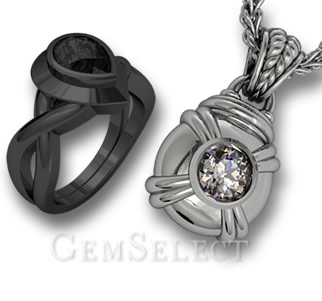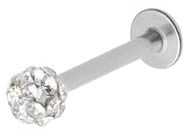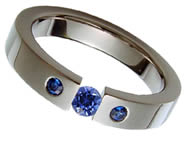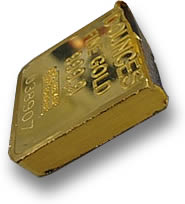When it comes to jewelry, alternative metals are gaining a lot of popularity and appeal, particularly in men’s jewelry designs. Although these materials are not commonly used for the making of fine jewelry,  they are being more commonly seen in wedding bands and for jewelry accessories that require the utmost durability. Alternative metals are a perfect choice for those who live active lifestyles and for those who don’t want to worry about damaging their jewelry. Compared to other precious metals like gold and silver – stainless steel, titanium and tungsten carbide can offer durability combined with style.
they are being more commonly seen in wedding bands and for jewelry accessories that require the utmost durability. Alternative metals are a perfect choice for those who live active lifestyles and for those who don’t want to worry about damaging their jewelry. Compared to other precious metals like gold and silver – stainless steel, titanium and tungsten carbide can offer durability combined with style.
Steel
While steel is an alloy of iron and carbon, stainless steel is an alloy composed of iron, chromium, and carbon. It is also known as ‘inox’ steel, taken from the French word ‘inoxydable’, in reference to its corrosion-resistant nature. Stainless steel comes in various grades, but in order to be considered ‘stainless’ steel, it must contain at least 10.5% chromium by mass. It is the chromium that gives stainless steel its protective resiliency. Its name can be slightly deceptive since ‘stainless’ steel is not actually 100% ‘stainless’, but it is still very resistant to rust, oxidization and other forms of corrosion. Stainless steel is not only used for jewelry-making, but it is also an industry standard for many surgical tools and household appliances.
 |
| Stainless Steel and White Zircon Tongue Piercing |
Not only is stainless steel durable, but it is also very attractive with a contemporary urban appearance. Though it can be tough to bend and mold into its final shape, it is still malleable and once finished, it retains its shape much better than gold and silver jewelry. Unlike some other light colored metals, stainless steel is unplated so it will not fade in color, nor will it chip over time. It is also a great material for those with allergies to other common metals such as copper or nickel, which is why it is a commonly used metal for starter earrings and other types of body piercing jewelry.
 |
| Sapphire and Titanium Ring |
Titanium
Titanium is a popular alternative metal used for many applications, including jewelry. It is one of the most common elements on earth. Of all the different metal types, titanium has the highest strength-to-density ratio, meaning it’s just as strong as many other metals but much lighter. Its attractive silver color, combined with its light weight and high strength means that titanium is becoming more and more popular for jewelry use. Like stainless steel, titanium is highly resistant to corrosion, making it an ideal choice for those with active lifestyles and also for those who suffer from base metal allergies.
Commercial grade industrial titanium is commonly used for making watch cases and watch bands. It is an ideal material for rings and body jewelry, owing to its strong resistance to dents and corrosion. In jewelry, commercial grade titanium is often greater than 99.2% pure, though it can be alloyed with iron, aluminum, vanadium and other elements or chemicals to produce lightweight alloys with interesting colors, such as bright blue, purple and black. Titanium may even be alloyed with gold, which can produce a 99% pure gold alloy. This gold alloy can still be marketed as ’24K’ gold (or sometimes as ‘990’ gold) because the 1% titanium content is considered insignificant. Gold-titanium is roughly as hard as 18K gold and much more durable than typical unalloyed 24K gold.
 |
| Gold-plated Tungsten Bar |
Tungsten Carbide
Tungsten carbide is a compound composed of equal parts tungsten and carbon. Carbon is what diamond is composed of, and when it’s combined with tungsten, the resulting mixture is the world’s hardest metal. Tungsten carbide has a hardness of 8-9 on the Mohs scale, which is approximately 4 times harder than titanium, and roughly 10 times harder than gold. In fact, only diamond and corundum (sapphire and ruby) are capable of scratching this incredibly hard and durable material.
Tungsten carbide has a density similar to gold. In fact, it can be used to make counterfeit gold. Gold-plated tungsten can easily pass most gold tests. In China, gold-plated tungsten is produced on a commercial scale and is used often for jewelry and fake ‘gold’ bars. However, because of tungsten carbide’s hardness and density, it is extremely difficult to work with. Once it has been shaped, it can be a challenge to re-cut or modify. Like both titanium and stainless steel, tungsten carbide is also highly resistant to corrosion and extremely difficult to scratch or dent. Tungsten carbide can cause skin irritation for some, but for those with no allergies or sensitivities, it is easily one of the best and toughest jewelry-making materials available today.
Source: https://www.gemselect.com/other-info/alternative-metals-for-jewelry.php

